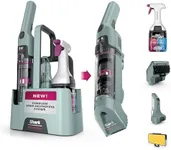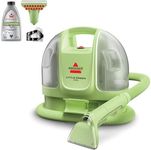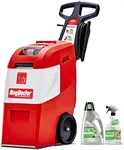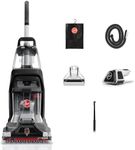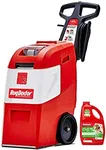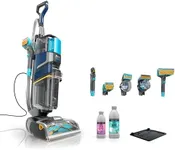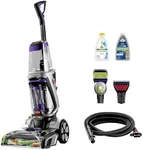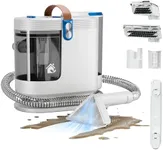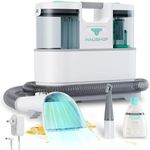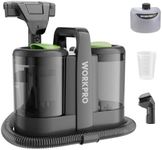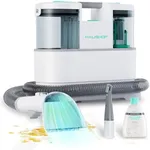Buying Guide for the Best Carpet Shampooers
Choosing the right carpet shampooer can make a big difference in keeping your carpets clean and fresh. To find the best fit, consider both the type of cleaning you need to do and how often you’ll use the machine. Thinking about the size of your carpets, how stained they tend to get, and whether you have pets or allergies will help you identify which features are most important for you. Understanding the key specs of carpet shampooers will help you pick one that suits your home and lifestyle.Tank CapacityTank capacity refers to how much water and cleaning solution a carpet shampooer can hold at one time. This is important because a larger tank allows you to clean more area without needing to stop and refill as often. Smaller tanks generally hold less than one gallon and are easier to handle but require more frequent refills, making them best for small rooms or spot cleaning. Medium tanks range from about one to 1.5 gallons and suit most average homes. Large tanks, holding over 1.5 gallons, are ideal for big spaces but make the machine heavier and bulkier. If you have large carpeted areas or want fewer interruptions, choose a bigger tank, but if you’re mainly cleaning small spaces, a compact model may be more convenient.
Cleaning Path WidthThe cleaning path width is how wide a strip of carpet the shampooer can clean in a single pass. This is important because a wider cleaning path allows you to cover more area with each swipe, reducing cleaning time. Widths typically range from about 8 to 15 inches. Narrower paths are found on smaller and more portable models, suitable for tight or hard-to-reach spaces. Wider paths are great for large open rooms. Think about the size and layout of your rooms—if you have lots of wide, open carpet, a wider path saves time, but if your home has narrow hallways or lots of furniture, a narrow path may be easier to maneuver.
WeightWeight refers to how heavy the shampooer is, both when empty and when filled with water. This matters because heavier machines can be tough to move, especially up and down stairs or around furniture. Lightweight shampooers are under 15 pounds and are ideal if you need to carry the machine around your home. Heavier models, over 20 pounds, often offer more powerful cleaning and larger tanks but can be tiring to use. Consider your strength and mobility, as well as the design of your home, when deciding how much weight is manageable for you.
Power and Cleaning ModesCarpet shampooers can come with different cleaning power levels and sometimes offer modes like deep clean, quick clean, or specialized pet modes. High suction and multiple brush rolls usually provide a more effective clean, helping to lift embedded dirt and stains. Entry-level shampooers may have fewer modes and less suction, which could be sufficient for light cleaning or maintenance. More advanced models often allow you to select different modes for tougher jobs. To decide what's right for you, think about how dirty your carpets get, whether you have pets or kids, and if stain removal is a priority.
Drying FeaturesSome carpet shampooers come with features to help carpets dry faster, like heated air fans or strong water extraction. This is important because wet carpets can be inconvenient and take longer to dry, increasing the chance of mold or mildew. Machines with strong suction remove more water after cleaning, which makes drying quicker. If you need to use your carpet soon after cleaning or you live in a humid area, prefer a model with good drying capabilities.
Attachments and AccessoriesMany carpet shampooers come with extra tools, such as hose attachments, brushes, or nozzles for cleaning stairs, upholstery, or tackling tough stains. These extras are important if you plan to clean more than just your floor, such as car interiors, furniture, or hard-to-reach areas. If you expect to clean a variety of surfaces, look for shampooers with a range of attachments, but if you’re only cleaning flat carpets, you may not need these extras.
Ease of Use and MaintenanceEase of use includes how simple it is to fill, empty, and clean the water tanks, how clearly the controls are marked, and whether parts can be easily removed for washing. Machines that are easier to operate and maintain will save you time and hassle. Some models have removable brushes or self-cleaning modes, which make maintenance quicker. If you want a low-fuss experience, favor user-friendly designs with clear instructions and easy-to-handle parts.

